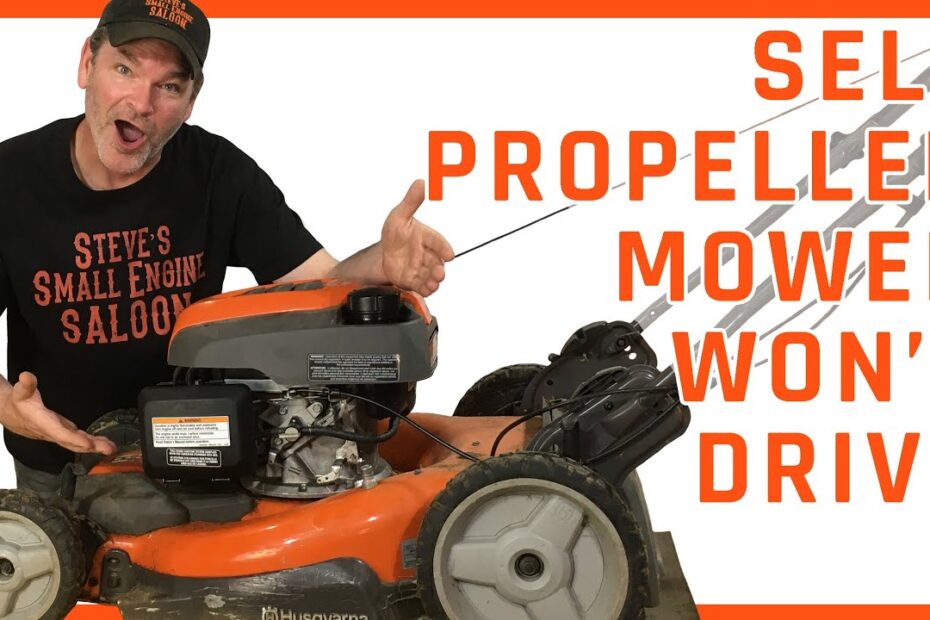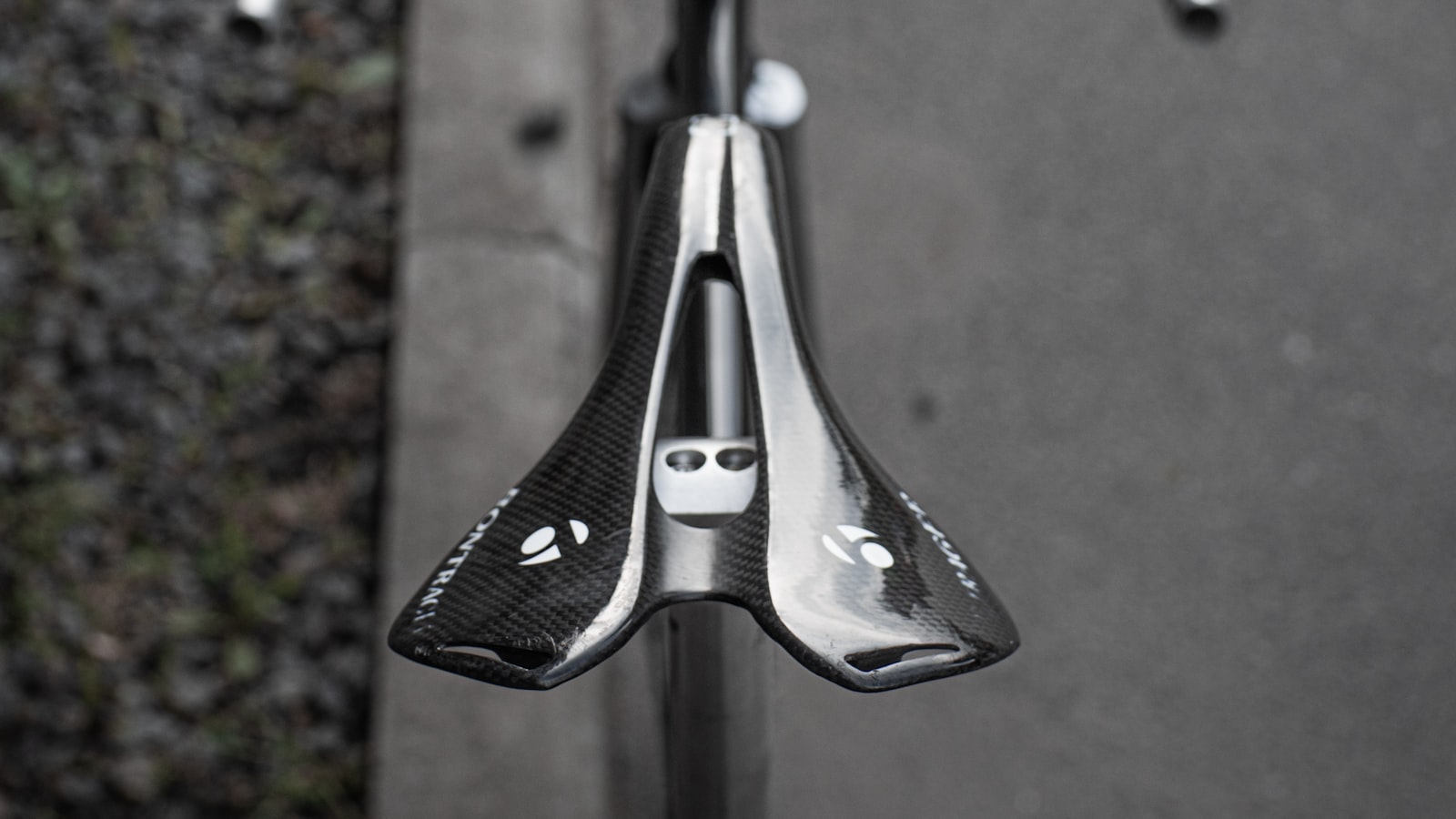Unleash the power of your lawn mower and conquer your unruly yard with ease! Picture this: the sun shining, the birds chirping, and you, effortlessly gliding across your turf, masterfully maneuvering your self-propelled lawn mower. Ah, the dream! But we’ve all been there, haven’t we? Suddenly, that once-thrilling self-propelling feature loses its magic, leaving us to push our heavy, reluctant mowers through what feels like an uphill battle. Fear not, intrepid mowers, for in this guide, we shall embark on a journey to restore the might of your self-propel system and regain the joy of effortless yard care! So roll up your sleeves, mechanical adventurers, because it’s time to delve into the enchanting world of fixing the self-propel on your trusty lawn mower.
Understanding the Mechanism: Exploring Common Issues with Self-Propel on Lawn Mowers
“
In your quest for a perfectly manicured lawn, a malfunctioning self-propel feature on your lawn mower can be a frustrating setback. Whether the mower simply refuses to move or its speed becomes erratic, it’s important to understand the mechanism and common issues that can arise. By familiarizing yourself with these common problems and their solutions, you’ll be equipped to effectively fix the self propel on your lawn mower and get back to achieving that well-groomed yard you desire.
An important aspect of fixing the self propel on a lawn mower lies in identifying the root cause of the problem. One common issue is a worn-out drive belt. Inspect the belt for signs of wear and tear such as cracks, fraying, or looseness. If it appears damaged, replacing it is necessary to restore proper functionality. Another possible culprit is a clogged or damaged drive system. Check for any debris or obstructions that may be impeding the smooth operation of the drive wheels. Cleaning or repairing the drive system can significantly improve the self-propel feature.
| Features | Tips |
|---|---|
| Multiple speed options | Always start on a lower speed setting and gradually increase as needed to prevent sudden jolts. |
| Easy height adjustment | Regularly check and adjust the cutting height to match the grass length for optimal self-propel performance. |
| Simple maintenance | Periodically lubricate the moving parts of the self-propel system as per the manufacturer’s recommendations to ensure smooth operation. |
Troubleshooting the Problem: Step-by-Step Guide to Diagnose Self-Propel Malfunctions
One of the common problems that lawn mower owners encounter is a malfunctioning self-propel system. It can be frustrating when the self-propel feature on your lawn mower stops working, making it difficult to maneuver your mower around the yard. However, fear not! With this step-by-step guide, you will be able to troubleshoot and fix the self-propel on your lawn mower in no time.
The first step in diagnosing the issue with your self-propel is to check the drive belt. Over time, the drive belt can become worn or stretched, causing it to slip or not engage at all. To do this, turn your lawn mower off and disconnect the spark plug wire for safety. Locate the drive belt underneath the mower deck and inspect it for any signs of damage such as cracks or fraying. If you notice any issues with the drive belt, it may need to be replaced. Refer to your lawn mower’s manual or consult with a professional for guidance on how to replace the drive belt properly.
Once you have checked the drive belt and ensured it is in good condition, the next step is to examine the self-propel mechanism itself. Often, debris such as grass clippings, twigs, or rocks can get lodged in the gears or wheels, causing the self-propel system to malfunction. Clean out any debris you see, making sure to remove it from all nooks and crannies. Additionally, check the gears and wheels for any signs of wear or damage. If you notice any issues, it may be necessary to lubricate or replace the gears or wheels. Again, consult your lawn mower’s manual or seek professional assistance if needed.
Fixing the Self-Propel: Expert Tips and Techniques for Lawn Mower Repair
Are you struggling with a malfunctioning self-propel feature on your lawn mower? Fret not, as we have gathered a range of expert tips and techniques to help you fix it in no time. Before you consider buying a new mower or spending money on expensive repairs, try these simple troubleshooting steps that could potentially save you time and money.
1. Check the Drive Belt
One of the most common reasons for a faulty self-propel is a worn-out or broken drive belt. To diagnose this issue, carefully inspect the drive belt for any signs of damage or stretching. If you notice any cracks, splits, or excessive wear, replacing the drive belt should solve the problem.
2. Examine the Traction Cable
The traction cable is responsible for engaging and disengaging the self-propel feature. Over time, it may become loose or disconnected. Begin by inspecting the traction cable for any signs of damage or disconnection. If needed, adjust the cable tension or replace it entirely to restore the self-propel functionality.
3. Evaluate the Wheel Assembly
Another common cause of self-propel problems is a worn or damaged wheel assembly. Ensure that the wheels spin freely and are not clogged with debris or grass clippings. Check for loose or broken parts, and if necessary, replace the wheels to improve the self-propel performance.
| Tips for Fixing Self-Propel Issues: | Features to Consider: |
|---|---|
|
|
| Common Mistakes to Avoid: | Additional Tips: |
|
|
No matter the cause of your lawn mower’s self-propel issues, these expert tips and techniques are designed to help you troubleshoot and repair them with ease. Always remember to prioritize safety by disconnecting the spark plug wire and wearing protective gear before attempting any repairs. Armed with these valuable insights, you’ll soon have your lawn mower’s self-propel back in perfect working order.
Maintenance and Prevention: How to Keep Your Self-Propel System in Optimal Condition
Regular maintenance and preventive measures are key to ensuring your lawn mower’s self-propel system stays in optimal condition. By implementing these tips and tricks, you can easily fix any issues that may arise and keep your lawn mower running smoothly throughout the grass-cutting season.
- Start by inspecting the drive belt regularly to ensure it is in good condition. Look for any signs of wear or damage, such as cracks or fraying. If you notice any issues, replace the belt immediately to prevent further damage to the self-propel system.
- Keep the self-propel wheels clean and free from debris. Grass clippings, dirt, and other contaminants can accumulate on the wheels and hinder their ability to provide the necessary traction. Regularly clean the wheels and remove any obstructions to keep the self-propel system working effectively.
- Check the oil level and quality in the self-propel system. Low or dirty oil can affect the performance of the system. Follow the manufacturer’s guidelines for oil change intervals and use the recommended oil type for your specific lawn mower model.
| Features | Tips |
| Inspect drive belt | Regularly check for wear |
| Clean self-propel wheels | Remove debris and obstructions |
| Monitor oil level and quality | Follow manufacturer’s guidelines |
Maintaining your lawn mower’s self-propel system is essential for effortless mowing and a pristine lawn. Alongside the mentioned tips, it’s also important to periodically lubricate the moving parts of the self-propel system to minimize friction and ensure smooth operation. Additionally, never overlook the importance of storing your lawn mower in a clean and dry location when not in use. Keep the machine protected from moisture and extreme temperatures, as this can lead to premature wear and damage.
By dedicating some time to regular maintenance and taking preventive measures, you’ll significantly extend the lifespan of your lawn mower’s self-propel system. Not only will your lawn mower work flawlessly, but you’ll also save yourself the hassle of costly repairs or replacements. Happy mowing!
Frequently Asked Questions
Q: Why won’t my lawn mower move forward when I engage the self-propel?
A: Ah, the stubborn self-propel, an issue that can leave you bewildered. Fear not, as we delve into the realm of lawn mower wizardry, for we have the solution to this confounding problem.
Q: How do I fix the self-propel on my lawn mower when it’s not working properly?
A: Rejoice, intrepid mower enthusiast, for we have unearthed the secrets to taming your rebellious self-propel! Step into the world of DIY miracles and follow our carefully crafted steps. Your mower will soon be gliding across your yard like a ballerina on a freshly waxed floor.
Q: Is fixing the self-propel on a lawn mower a complicated task?
A: Nay, dear reader! Though the inner workings of a mower may appear daunting, fear not, for you possess the power to restore the self-propel mechanism. Patience, some basic tools, and a dash of determination are all you need to embark on this odyssey of mechanical mastery. So, let’s get our hands dirty and set forth on this repair expedition! As we reach the end of our journey on how to fix the self propel on a lawn mower, we hope you now feel armed with both knowledge and confidence to tackle any propulsion problems that may arise in your grassy kingdom. Remember, you hold the power to restore that effortless glide to your trusty mower – no longer shall it be burdened with the sluggish crawl that once plagued its wheels.
With a touch of determination and a sprinkle of mechanical wizardry, you can swiftly revive your mower’s self-propelling prowess. Never again shall you experience the disheartening struggle of pushing a heavy machine across expansive lawns. Instead, you shall revel in the satisfaction of effortlessly maneuvering throughout your green haven, all thanks to your newly acquired repair skills.
So, equip yourself with the necessary tools, roll up those sleeves, and embark on your quest to restore your lawn mower’s self propel. Remember to embrace the process, for every challenge encountered is an opportunity for growth and discovery. Be patient, be meticulous, and be fearless in your pursuit of a flawlessly functioning self propel.
And as you breathe life back into your mower’s wheels, let your actions serve as a reminder of the remarkable potential all around us – the ability to take charge, fix what is broken, and bring forth new life. Eventually, the once-weary mower shall rise from the ashes, a phoenix of the lawn, ready to joyously roam across the green plains under your expert guidance.
Now, go forth, enthusiast of the perfect mown lawn, and conquer the self propel woes that may stand in your way. May your mower hum with newfound vigor as you navigate effortlessly through the grassy terrain. And remember, in the realm of lawn care, no obstacle is insurmountable as long as you possess determination and a touch of mechanical magic.
Happy mowing, fellow adventurer!
- When to Put Weed and Feed on Lawn in Michigan - October 16, 2023
- When to Fertilize Potatoes Plants - October 16, 2023
- Can You Plant Clover in the Spring - October 16, 2023
Contents
- 1 Understanding the Mechanism: Exploring Common Issues with Self-Propel on Lawn Mowers
- 2 “
- 3 Troubleshooting the Problem: Step-by-Step Guide to Diagnose Self-Propel Malfunctions
- 4 Fixing the Self-Propel: Expert Tips and Techniques for Lawn Mower Repair
- 5 Maintenance and Prevention: How to Keep Your Self-Propel System in Optimal Condition
- 6 Frequently Asked Questions





